At this event Helena Warren from Cadfor Equestrian and Murray Greys spoke at a webinar and then in afternoon led two paddock walks where she identified pasture species. In the webinar Helena discussed the critical elements of establishing and maintaining grazing pastures in a challenging and changing climate.
You can watch the webinar recording.
Key points
1.
Know the production capability of your farm and aim to keep ground cover at 70% or higher. This will reduce the likelihood of your soil becoming degraded. The land class, parent material (rock), slope, soil type and management all contribute to the suitability of your land to support livestock.
See more about land classes
The MLA Pasture Soil Health Kit contains information on ground cover management and stocking rates.
2.
Know your soil type and soil pH. Helena explained the Law of the Minimum, which states that
plant growth is dictated not by total resources available, but by the scarcest resource (or limiting factor).
Limiting soil factors can include:
- Physical characteristics such as soil depth, soil texture, organic matter and moisture
- Low or high soil pH that makes some minerals toxic and affects nutrient uptake by plants
- The nutrients available for plant growth.
A soil pH of less than 5.5 can reduce some nutrient availability and cause aluminium toxicity that will affect plant growth and legume nodulation. Over time, soils in the Southern Highlands have become more acidic due to cropping and agriculture. Some plants are more adapted to low soil pH, salinity and low rainfall. For example, Serradella is more tolerant of acid soil and Balansa Clover tolerates saline soils but generally it is easier to address the soil pH problem rather than try to find plants that will grow in increasingly acidic soils.
See more about soil pH
3.
Understand the nutritional requirements of your livestock. For example, horses require lower energy pastures than sheep and cattle. Grazing horses on native pastures can help reduce the occurrence of laminitis, while young growing sheep or lactating ewes have a higher demand for protein and energy.
4. Pasture establishment requires water and the correct soil temperature. The type of plant you want to grow will dictate the best time for planting. C3 grasses are temperate grasses and C4 grasses are adapted to warm conditions. Having a mix of both types of grasses can help you grow more pasture throughout the year. Native pastures are generally well adapted to surviving drought conditions.
More information
Grazing Management for Native Pastures
Tactical Grazing to Maximise Animal and Pasture Productivity
Weed removers, pasture improvers – effective weed control.
Rejuvenating perennial pastures
Pasture Species and Varieties
Grasses of the NSW Tablelands
Grass Habits and Habitats
Farming Forecaster – a tool for monitoring soil moisture and ground cover
Agrifutures – free downloads and resources
Weeds Poisonous to Horses - free downloadable PDF.
C3 and C4 native grasses
Pasture walks
In the afternoon Helena led two paddock walks through old pastures in Bywong where we learned to identify pasture plants and looked at the pH profile in soil cores using a home pH testing kit.
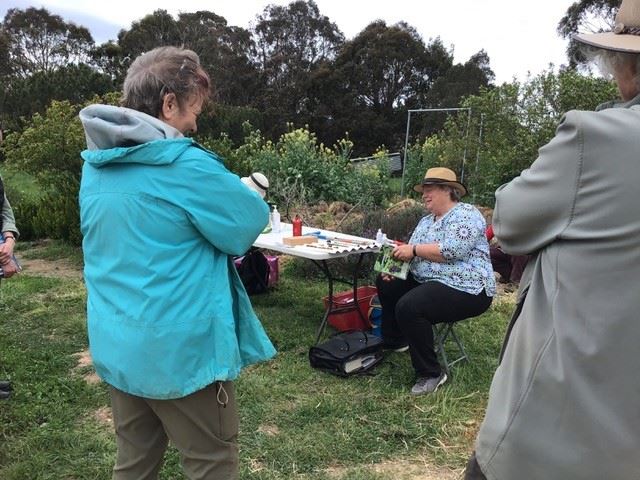
Pasture plants we looked at
Ryegrass (Lolium perenne) is red at the base and has shiny leaves. Considered a good pasture grass, but not good for horses as it is high in sugar. See more
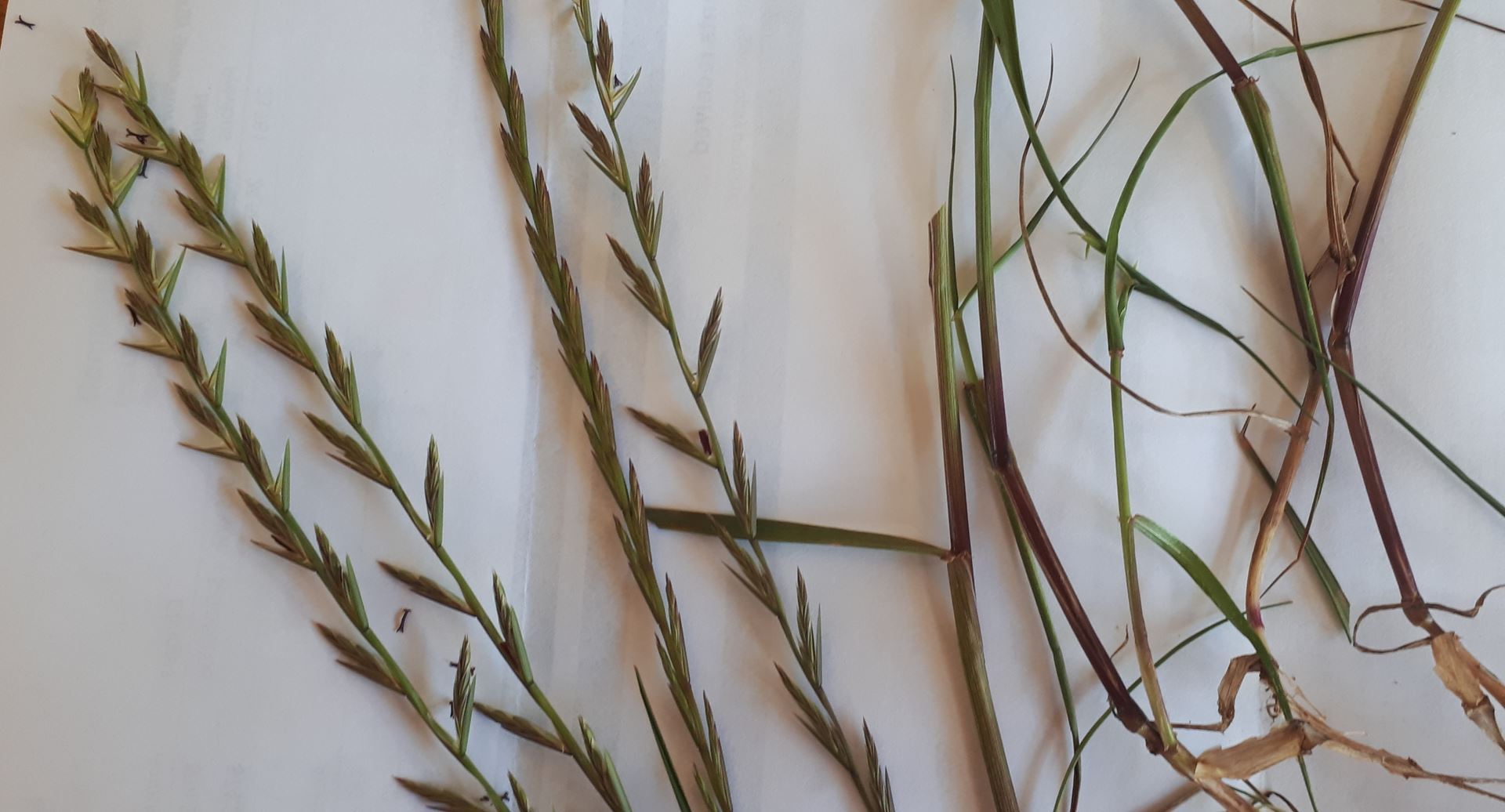
Giant Brome Grass (Bromus diandrus) also know as rip gut brome is annual tufted grass to 100 cm tall with sharp seed heads. Common in disturbed areas, such as road sides and stick camps. Considered a weed and has limited feed value. May produce useful early spring feed but is only palatable when it is vegetative. Seeds can damage the eyes, mouth and guts of stock. See more
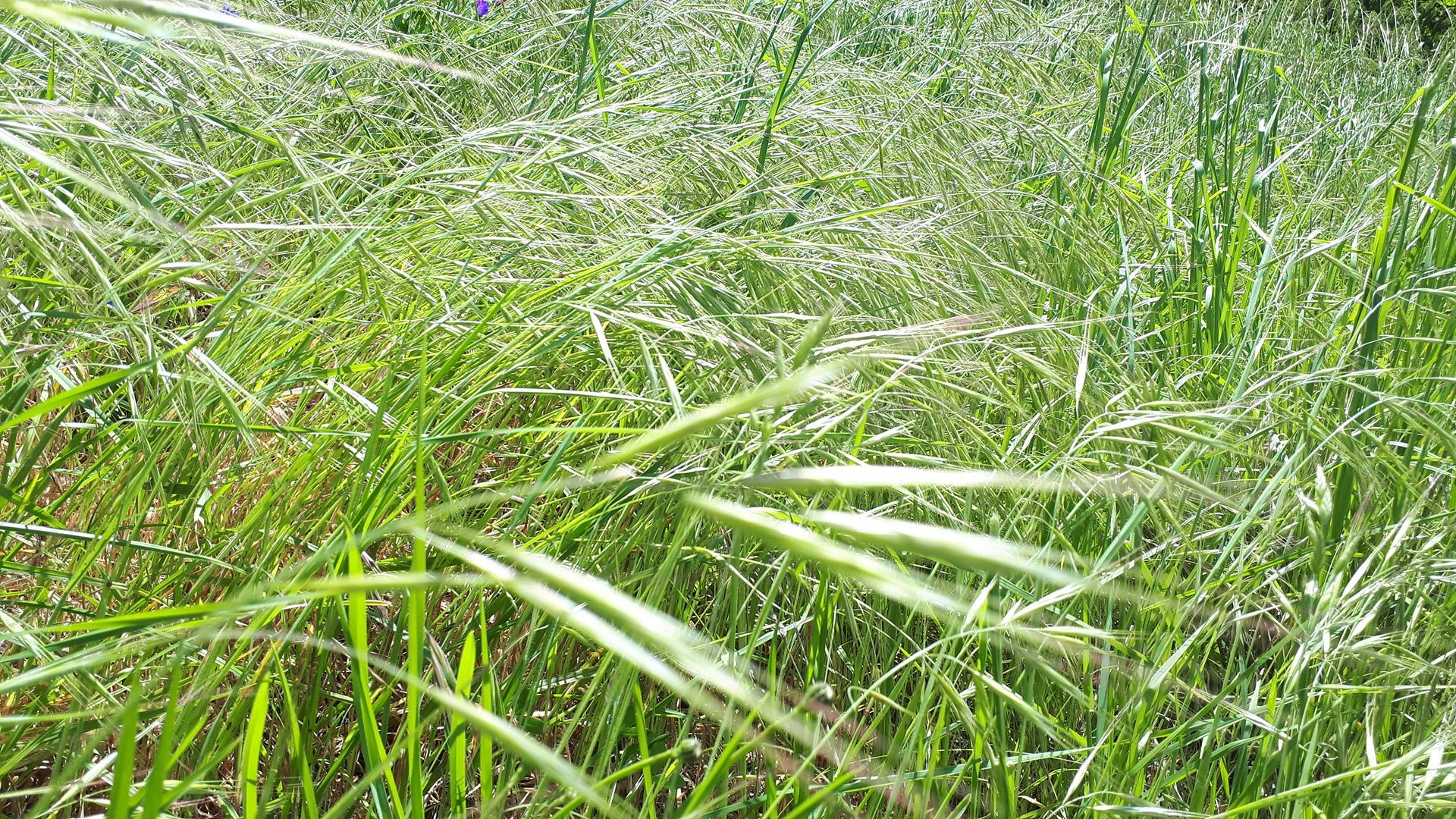
Prairie Grass (Bromus catharticus) a tufted short lived grass to 150cm tall. The leaves are sparsely hairy and bright green. This grass has higher feed value than Giant Brome Grass. See more
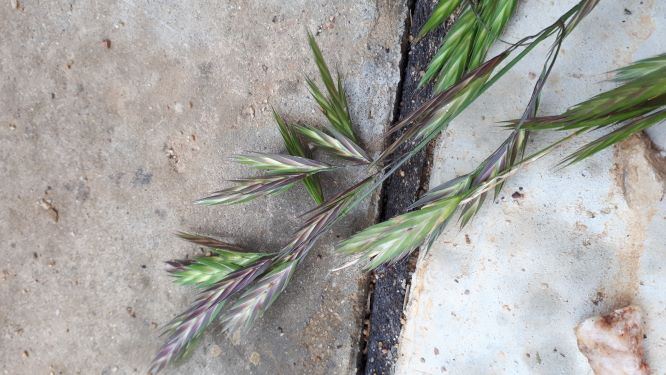
Common Wheat Grass (Anthsachne scabra), a native cool season perennial grass to 100cm tall. The leaves typically have a twist and the flag leaf sticks out at a right angle. The leaf sheaths are hairy and auricles are present. A minor component of pastures but is drought and frost tolerant. See more
.jpg)
Cocksfoot (Dactylis glomerata) an introduced perennial pasture grass. Cocksfoot is tolerant of acidic soils (down to pH 4.0 and have high exchangeable aluminium).
To differentiate Cocksfoot from Phalaris (Phalaris aquatica) grass, the stem of Cocksfoot rolls in your fingers like a flat tyre, while the Phalaris stem is round and rolls easily. The seedheads are also different. In the photo below, a Phalaris grass stem is shown on the left and Cocksfoot is on the right.
See more about Cocksfoot and Phalaris.
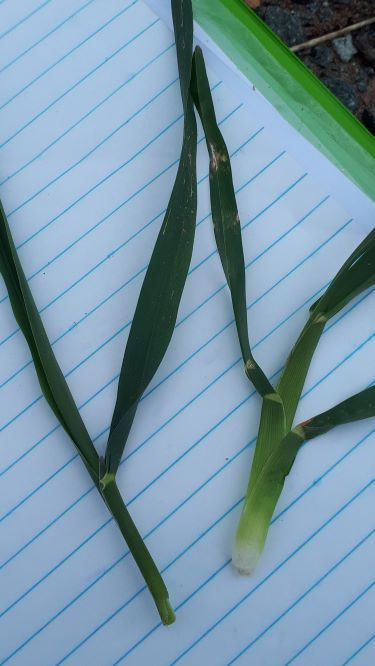
Subterranean Clover (Trifolium subterraneum) has small white pea like flowers on stems that bury the seed into the soil (like a bur). The leaf of the subterranean clover is heart shaped and hairy with equal leaf storks. See more
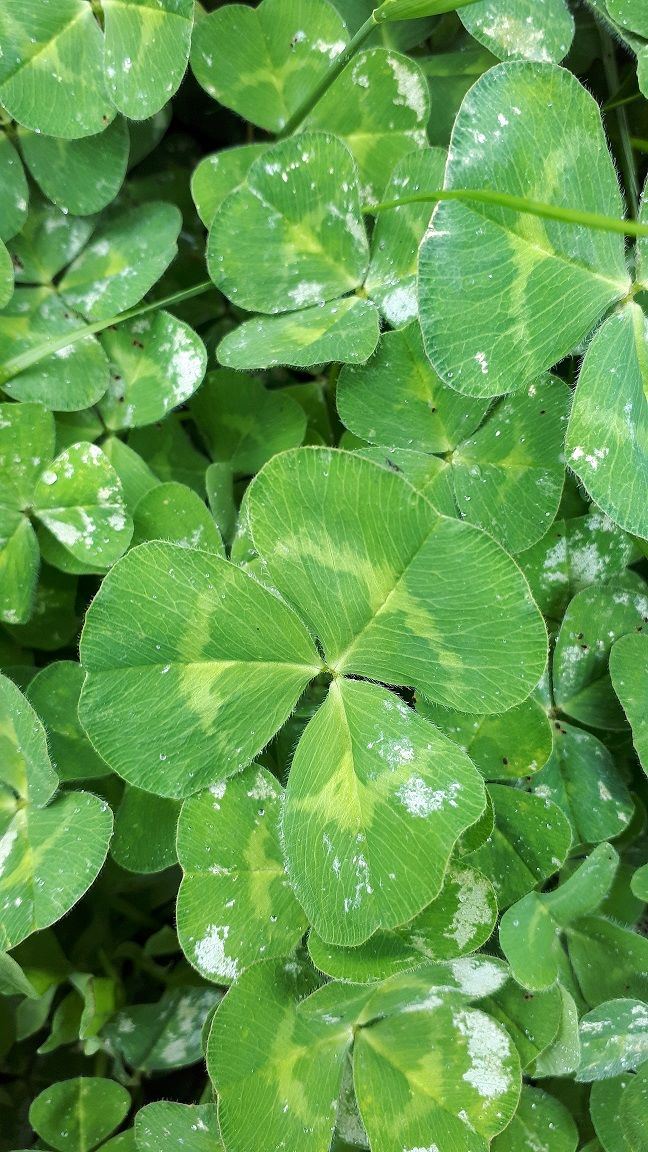
White Clover (Trifolium repens) is a perennial, aerial seeding clover with white flowers and often a pale green stripe across the leaves. See more
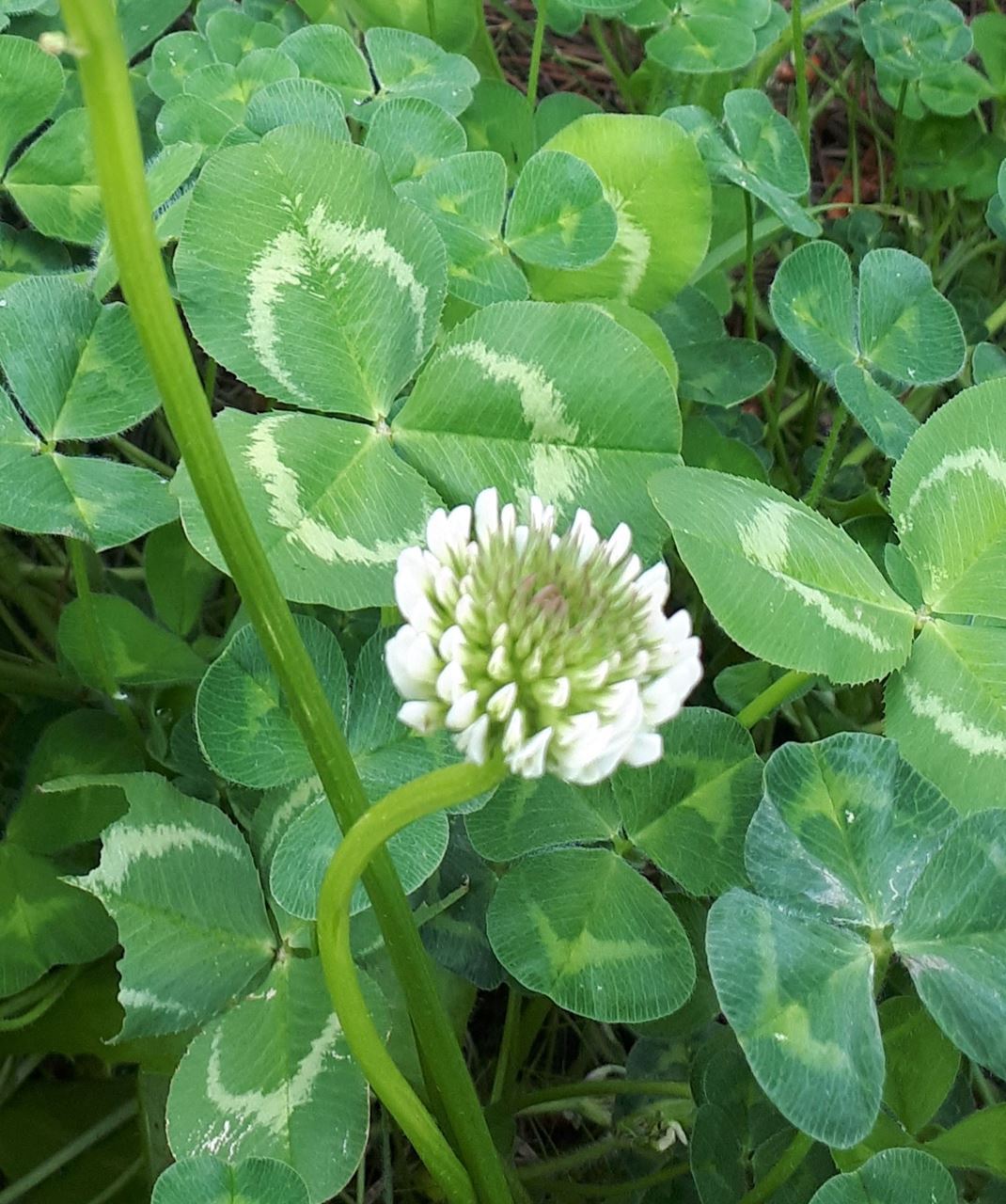
Balansa Clover (Trifolium michalelianum) Introduced cool season annual, the seed heads consist if many white pea like flowers held on stems above the ground. The flowers are white to pink. It is a hard seeded annual clover that tolerates waterlogging. See more
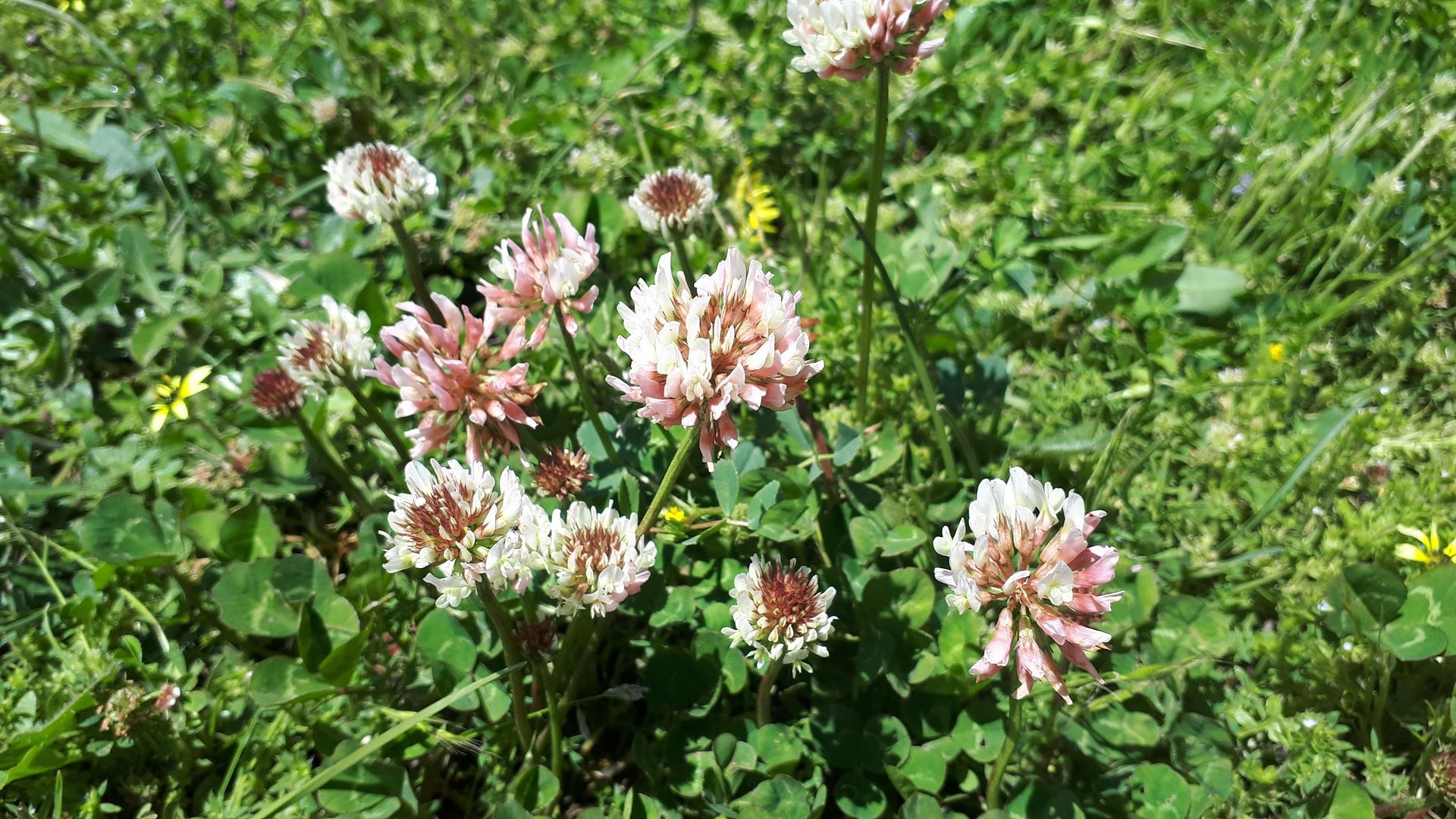
Meadow Fescue (Festuca pratensis) an erect, short-lived, tussock forming perennial grass with leaves 3-5mm wide. Rough to touch on the top and shiny below. The auricles are stem clasping and hairless. See more
Yorkshire Fog (Holcus lanatus) grass is common in stock camp and low lying areas. It has furry leaves that many stock do not like to eat. Erect tufted greyish grass, covered in velvety hairs. The flower heads are purplish to white. Regarded as a weed. See more
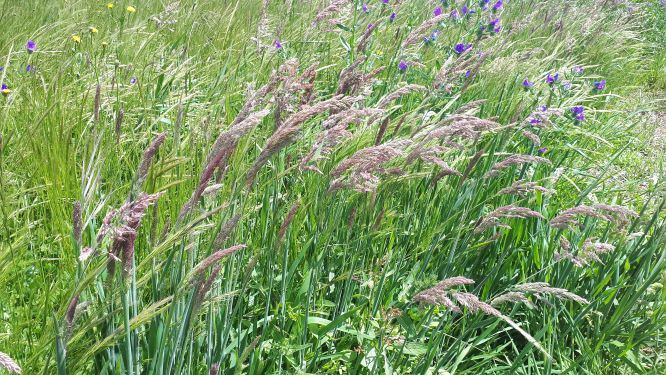
Wallaby Grass (Danthonia species) is shown in the photo below, a native grass that survives drought. The leaf has a hairy ligule where it joins the stem. This feature is present in the many species of Wallaby Grass. See more
.jpg)
Spear Grass (Austrostipa spp) a native grass, good for biodiversity. Can grow year round but most productive in spring. Leaves are fine, inrolled, usually rough to touch. See more
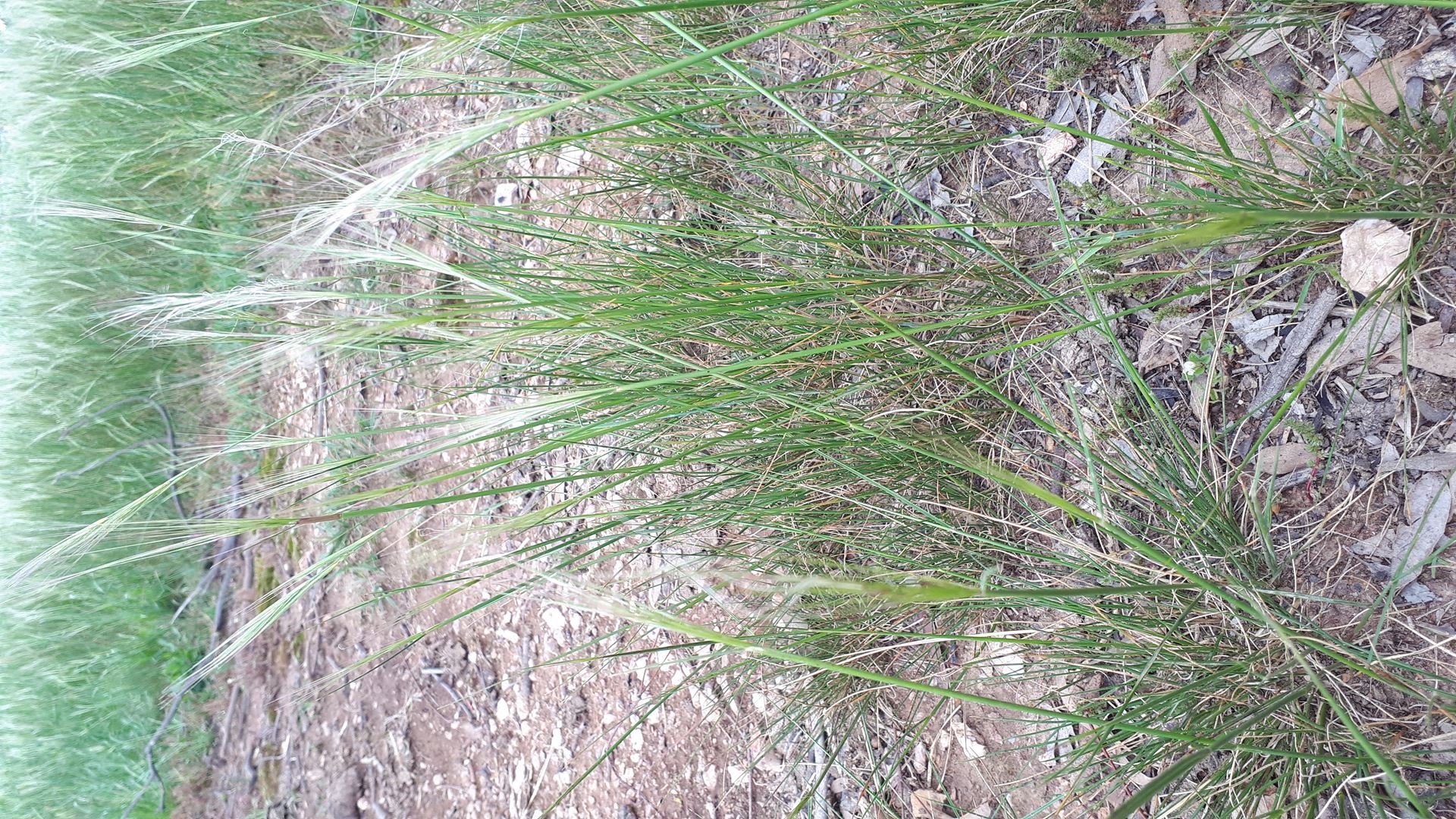
This project is supported by the NSW Government Department of Planning, Industry and Environment Increasing Resilience to Climate Change community grants program. More information about the program can be found here.